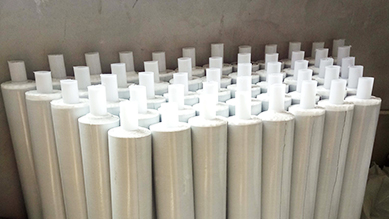The Importance of Red Floor Marking Tape in Safety and Organization
In a world where safety and efficiency are paramount, the need for clear communication within any environment cannot be overstated. One essential tool that has become increasingly popular across various industries is red floor marking tape. This simple yet effective solution plays a critical role in enhancing workplace safety, improving organization, and facilitating better workflow.
Understanding Red Floor Marking Tape
Red floor marking tape is a vibrant, adhesive tape that is typically used to demarcate areas for safety precautions, designate walkways, or highlight hazardous zones. Its bright color is easily visible, making it an effective tool for drawing attention to specific areas within a facility. The tape is designed for high durability and can withstand heavy foot traffic, making it suitable for environments such as warehouses, factories, hospitals, and even retail spaces.
Enhancing Workplace Safety
One of the primary uses of red floor marking tape is to enhance safety within the workplace. By clearly marking hazards, emergency routes, and restricted zones, businesses can significantly reduce the risk of accidents. For instance, red tape can outline areas where there are potential dangers, such as machinery or spills, alerting employees to tread carefully.
Moreover, during emergencies, the tape can guide personnel toward evacuation routes, ensuring a swift and orderly exit. In a recent survey, many businesses reported a noticeable decrease in accidents after implementing floor marking systems, underscoring the importance of visibility in promoting safety.
Promoting Organization and Efficiency
Beyond safety, red floor marking tape is a valuable tool for promoting organization within busy environments. In warehouses, for example, the tape can be used to establish clear pathways for pedestrians and vehicles, reducing congestion and improving efficiency. Designated zones for certain tasks—such as packing, shipping, or staging—can be marked with red tape to streamline operations.
red floor marking tape

Additionally, the use of color-coded tape (including red for hazardous areas) allows for quicker recognition of different zones, minimizing confusion and helping employees to locate supplies or equipment more efficiently. This organization can lead to improved productivity and a more harmonious work environment.
Applications Across Various Industries
The versatility of red floor marking tape makes it applicable in numerous settings. In healthcare facilities, it can highlight areas such as medication storage or dangerous materials, ensuring that staff members are aware of their surroundings. Retailers can use red tape to manage customer flow during busy shopping seasons or to mark out clearance areas.
Manufacturing plants benefit from the use of this tape by establishing clear operational boundaries and ensuring that safety protocols are visually reinforced. Even educational institutions utilize red floor marking tape to guide students and staff during emergencies or to designate areas for specific activities.
Choosing the Right Tape
When selecting red floor marking tape, it's crucial to consider factors such as adhesion, durability, and visibility. High-quality tapes are designed to withstand wear and tear, sticking firmly to various surfaces without peeling or lifting. Additionally, ensure that the tape is suitable for the specific environment in which it will be used. For example, outdoor settings may require tape that can endure weather elements.
Conclusion
Red floor marking tape may seem like a simple solution, but its impact on safety and organization cannot be ignored. By investing in high-quality marking tape, businesses can foster a safer and more efficient work environment. Whether in a bustling warehouse, a healthcare facility, or a busy retail store, the bright red warnings and pathways it provides help to keep everyone informed and safe. As industries continue to prioritize safety and efficiency, the role of floor marking tape will undoubtedly expand, proving that sometimes, the simplest tools can have the most significant effects.
-
XIANGFAN Rubber Tape-Ultimate Solutions for All Your Insulation NeedsNewsJun.24,2025
-
XIANGFAN Rubber Tape-Protection for Industrial and Residential ApplicationsNewsJun.24,2025
-
XIANGFAN Rubber Tape: Superior Safety and Sealing for Demanding EnvironmentsNewsJun.24,2025
-
XIANGFAN Rubber Tape: Reliable Solutions for Every Electrical ChallengeNewsJun.24,2025
-
XIANGFAN Electrical & Industrial Tape: Powering Reliability Across IndustriesNewsJun.24,2025
-
XIANGFAN Electrical & Industrial Tape: Excellence in Every ApplicationNewsJun.24,2025
